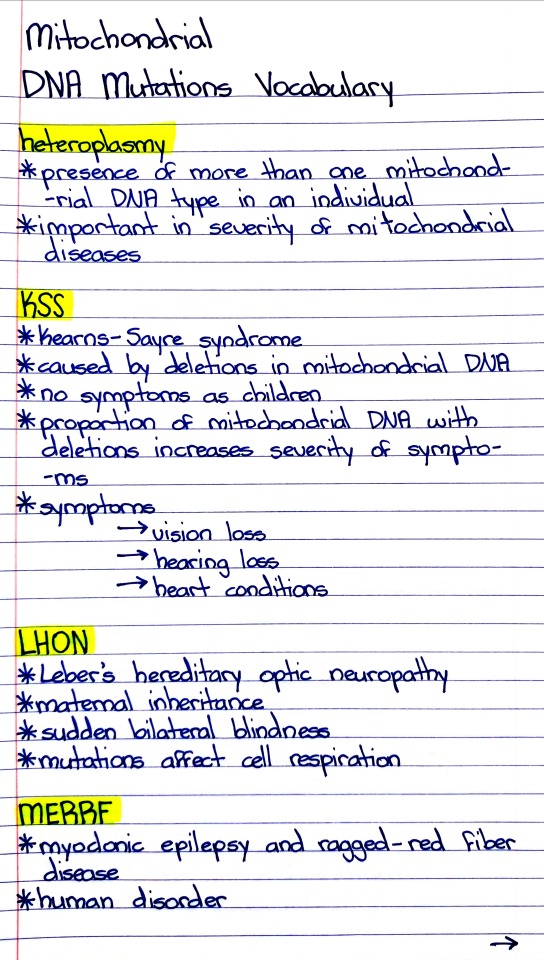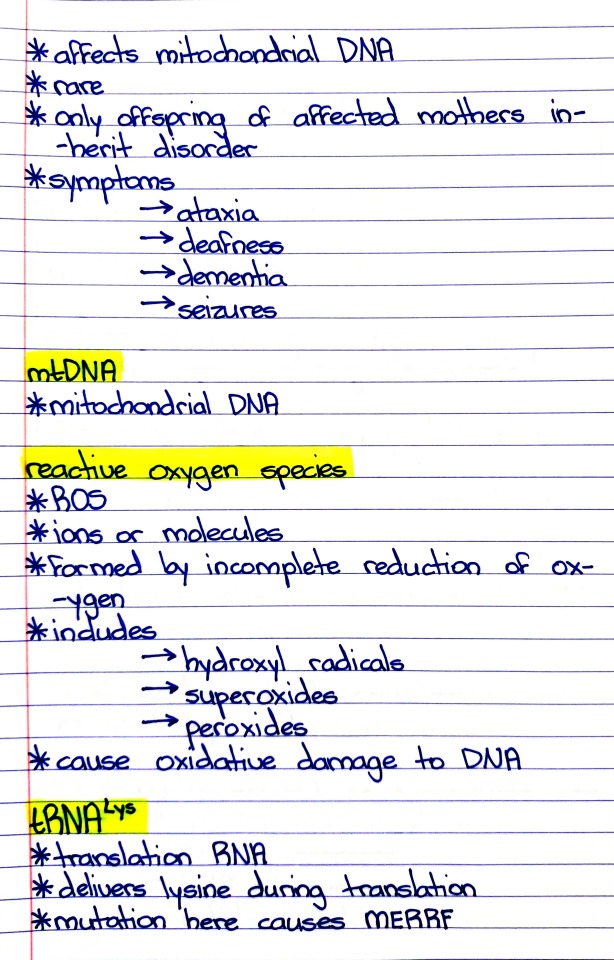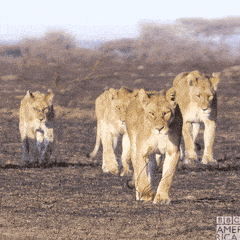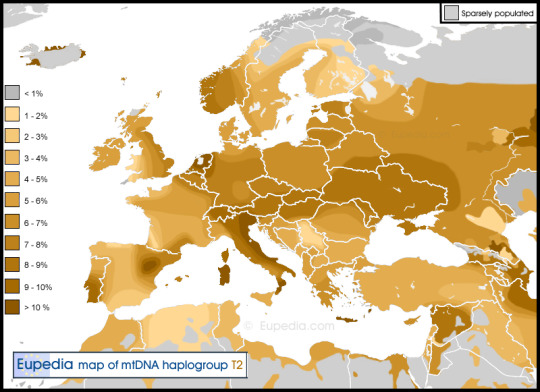#mtdna
Text


Afro-Jamaicans are Jamaicans of predominant African descent. They represent the largest ethnic group in the country.
The ethnogenesis of the African Jamaican people stemmed from the Atlantic slave trade of the 16th century, when enslaved Africans were transported as slaves to Jamaica and other parts of the Americas. During the period of British rule, slaves brought into Jamaica were primarily Akan, some of whom ran away and joined with Maroons and even took over as leaders

West Africans were enslaved in wars with other West African states and kidnapped by either African or European slavers. The most common means of enslaving an African was through abduction.

Based on slave ship records, enslaved Africans mostly came from the Akan people (notably those of the Asante Kotoko alliance of the 1720's: Asante, Bono, Wassa, Nzema and Ahanta) followed by Kongo people, Fon people, Ewe people, and to a lesser degree: Yoruba, Ibibio people and Igbo people. Akan (then called Coromantee) culture was the dominant African culture in Jamaica.
Originally in earlier British colonization, the island before the 1750s was in fact mainly Akan imported. However, between 1663 and 1700, only six per cent of slave ships to Jamaica listed their origin as the Gold Coast, while between 1700 and 1720 that figure went up to 27 per cent. The number of Akan slaves arriving in Jamaica from Kormantin ports only increased in the early 18th century. But due to frequent rebellions from the then known "Coromantee" that often joined the slave rebellion group known as the Jamaican Maroons, other groups were sent to Jamaica. The Akan population was still maintained, since they were the preference of British planters in Jamaica because they were "better workers", according to these planters. According to the Slave Voyages Archives, though the Igbo had the highest importation numbers, they were only imported to Montego Bay and St. Ann's Bay ports, while the Akan (mainly Gold Coast) were more dispersed across the island and were a majority imported to seven of 14 of the island's ports (each parish has one port).

Myal and Revival
Kumfu (from the word Akom the name of the Akan spiritual system) was documented as Myal and originally only found in books, while the term Kumfu is still used by Jamaican Maroons. The priest of Kumfu was called a Kumfu-man. In 18th-century Jamaica, only Akan gods were worshipped by Akan as well as by other enslaved Africans. The Akan god of creation, Nyankopong was given praise but not worshipped directly. They poured libation to Asase Ya, the goddess of the earth. But nowadays they are only observed by the Maroons who preserved a lot of the culture of 1700s Jamaica.
"Myal" or Kumfu evolved into Revival, a syncretic Christian sect. Kumfu followers gravitated to the American Revival of 1800 Seventh Day Adventist movement because it observed Saturday as god's day of rest. This was a shared aboriginal belief of the Akan people as this too was the day that the Akan god, Nyame, rested after creating the earth. Jamaicans that were aware of their Ashanti past while wanting to keep hidden, mixed their Kumfu spirituality with the American Adventists to create Jamaican Revival in 1860. Revival has two sects: 60 order (or Zion Revival, the order of the heavens) and 61 order (or Pocomania, the order of the earth). 60 order worships God and spirits of air or the heavens on a Saturday and considers itself to be the more "clean" sect. 61 order more deals with spirits of the earth. This division of Kumfu clearly shows the dichotomy of Nyame and Asase Yaa's relationship, Nyame representing air and has his 60 order'; Asase Yaa having her 61 order of the earth. Also the Ashanti funerary/war colours: red and black have the same meaning in Revival of vengeance. Other Ashanti elements include the use of swords and rings as means to guard the spirit from spiritual attack. The Asantehene, like the Mother Woman of Revival, has special two swords used to protect himself from witchcraft called an Akrafena or soul sword and a Bosomfena or spirit sword

Jamaican Patois, known locally as Patwa, is an English creole language spoken primarily in Jamaica and the Jamaican diaspora. It is not to be confused with Jamaican English nor with the Rastafarian use of English. The language developed in the 17th century, when enslaved peoples from West and Central Africa blended their dialect and terms with the learned vernacular and dialectal forms of English spoken: British Englishes (including significant exposure to Scottish English) and Hiberno English. Jamaican Patwa is a post-creole speech continuum (a linguistic continuum) meaning that the variety of the language closest to the lexifier language (the acrolect) cannot be distinguished systematically from intermediate varieties (collectively referred to as the mesolect) nor even from the most divergent rural varieties (collectively referred to as the basilect). Jamaicans themselves usually refer to their use of English as patwa, a term without a precise linguistic definition.
Jamaican Patois contains many loanwords of African origin, a majority of those etymologically from Gold Coast region (particularly of the Asante-Twi dialect of the Akan language of Ghana).
Most Jamaican proverbs are of Asante people, while some included other African proverbs

Jamaican mtDNA
A DNA test study submitted to BMC Medicine in 2012 states that "....despite the historical evidence that an overwhelming majority of slaves were sent from the Bight of Biafra and West-central Africa near the end of the British slave trade, the mtDNA haplogroup profile of modern Jamaicans show a greater affinity with groups found in the present-day Gold Coast region Ghana....this is because Africans arriving from the Gold Coast may have thus found the acclimatization and acculturation process less stressful because of cultural and linguistic commonalities, leading ultimately to a greater chance of survivorship and a greater number of progeny."
More detailed results stated: "Using haplogroup distributions to calculate parental population contribution, the largest admixture coefficient was associated with the Gold Coast(0.477 ± 0.12 or 59.7% of the Jamaican population with a 2.7 chance of Pygmy and Sahelian mixture), suggesting that the people from this region may have been consistently prolific throughout the slave era on Jamaica. The diminutive admixture coefficients associated with the Bight of Biafra and West-central Africa (0.064 ± 0.05 and 0.089 ± 0.05, respectively) is striking considering the massive influx of individuals from these areas in the waning years of the British Slave trade. When excluding the pygmy groups, the contribution from the Bight of Biafra and West-central rise to their highest levels (0.095 ± 0.08 and 0.109 ± 0.06, respectively), though still far from a major contribution. When admixture coefficients were calculated by assessing shared haplotypes, the Gold Coast also had the largest contribution, though much less striking at 0.196, with a 95% confidence interval of 0.189 to 0.203. When haplotypes are allowed to differ by one base pair, the Jamaican matriline shows the greatest affinity with the Bight of Benin, though both Bight of Biafra and West-central Africa remain underrepresented. The results of the admixture analysis suggest the mtDNA haplogroup profile distribution of Jamaica more closely resembles that of aggregated populations from the modern-day Gold Coast region despite an increasing influx of individuals from both the Bight of Biafra and West-central Africa during the final years of trading enslaved Africans.
The aforementioned results apply to subjects whom have been tested. Results also stated that African Jamaicans (that make up more than 90% of the population) on an average have 97.5% of African MtDNA and very little European or Asian ancestry could be found. Both ethnic and racial genetic results are based on a low sample of 390 Jamaican persons and limited regional representation within Jamaica. As Afro-Jamaicans are not genetically homogeneous, the results for other subjects may yield different results.

#african#afrakan#kemetic dreams#africans#brownskin#brown skin#afrakans#african culture#afrakan spirituality#asante#jamaican#benin#bight of biafra#gold coast#mtdna#afro jamaicans#twi#west africa#africa#algeria#uganda#ethiopia#ghana#myal#rastafari#rasta#rastaman#rasta love#kisumi amau#tegan and sara
86 notes
·
View notes
Link
RESEARCH ARTICLE:
Museum specimens of a landlocked pinniped reveal recent loss of genetic diversity and unexpected population connections
University of Oulu
#Yle.fi#Ecology and Evolution#Suomi#Finland#Oulun Yliopisto#University of Oulu#research#Itäsuomi#Itä-Suomi#East Finland#Saimaa#Lake Saimaa#Saimaan norppa#Saimaa Ringed Seal#Pusa hispida saimensis#Phoca hispida saimensis#Genetiikka#Genetics#DNA#mtDNA#dna sequencing#suomitumblr#suomitumppu#suomi tumppu#suomi tumblr#suomijutut
5 notes
·
View notes
Photo


#studyblr#notes#medblr#medical notes#med notes#mtdna#trna#rna#rna notes#dna#dna notes#genetics#genetics notes#translation rna#translation rna notes#mitochondria#mitochondrial mutation#mitochondrial mutations#mitochondrial dna#mitochondrial dna notes#peroxides#superoxides#reactive oxygen species
3 notes
·
View notes
Text


On the images: on the left a migration path of mtDNA H1af2 - the mtDNA of Alexandra Feodorovna maternal line; on the right the region in France where the earliest mtDNA ancestor of Alexandra Feodorovna originated from.
What is known about the mtDNA of Alexandra Feodorovna (Alix of Hesse)?
The mtDNA of Alexandra Feodorovna: H1af2 (source FBI Laboratory - 2018)
The earliest known ancestor: Alba Autun (846-?)- France
The year of formation of the mtDNA: 100 BCE
Number of descendants: 11 (the ones who took mtDNA test with FTDNA)
Current location of the descendants: France, Switzerland, and Germany
#investigation#research#romanovs#seraphima bogomolova#mtDNA#Alexandra Feodorovna#ancestry#Alix of Hesse
1 note
·
View note
Text
New Book
I've been working upon a new book. My second book. I've been connecting the Spanish side of my Genealogy for years now. During that process I kept coming up on, indigenous ancestors. I thought it's high time I begin writing about my journey of discovery. The title of the book:
Discovering my Guanahatabey and Taino Indigenous ancestors. From Coamo to San German Puerto Rico. It's still in process.
#Guanahatabey#Taino#ancient history#Puerto Rico#Enslaved#San German Militia Indios roster#John Browne Ayés author.#Genealogy#Biogenealogy#Genome#DNA#MtDNA#indigeneity#Discovery
0 notes
Text
DNA Analyses
Several studies [1-2; see also 3] have examined mitochondrial DNA (mtDNA) collected from wolves, coyotes, and suspected hybrids throughout North America. Lehman et al. (1991) have determined that repeated (at least six) mating events between wolves and coyotes have led to the introgression of coyote mtDNA genotypes into wolf populations. No wolf genotypes were found in sampled coyotes, indicating a unidirectional introgression from coyotes to wolves [1]. The integrity of mtDNA haplotypes suggests that either (1) interbreeding between female wolves and male coyotes is not prevalent or (2) the resulting offspring of this type of cross do not breed further. Because viable hybrid offspring may have crossbred back into the coyote population rather than the wolf, some coyote populations may have greater genetic contributions from male wolves than can be determined through mtDNA analyses [1].
More recent studies [3-4] have determined that the genetic composition of these hybrids—coywolves—is approximately 60-65% coyote, 25-30% wolf, and 10% dog. In a study published in 2010 [4], geneticists discovered that DNA samples grouped in the Northeast yet remained distinct from their parental species’ genes [see also 3, 5], which indicates that coywolves are "currently breeding true…and now have relatively little influence from their parent species in the core of their range" [3, p. 46]. These overall genetic determinations have led to disagreement over whether coywolves should be considered their own species (i.e., Canis oriens) [6; see also 7].
References:
[1] Lehman, N., Eisenhawer, A., Hansen, K., Mech, L.D., Peterson, R.O., Gogan, P.JP., & Wayne, R.K. (1991). Introgression of coyote mitochondrial DNA into sympatric North American gray wolf populations. Evolution, 45(1), 104–119. https://doi.org/10.2307/2409486
[2] Stronen, A.V., Tessier, N., Jolicoeur, H., Paquet, P.C., Hénault, M., Villemure, M., … Lapointe, FJ. (2012). Canid hybridization: Contemporary evolution in human-modified landscapes. Ecology and Evolution, 2(9), 2128-2140. https://doi.org/10.1002/ece3.335
[3] Way, J.G. (2021). Coywolf: Eastern coyote genetics, ecology, management, and politics. Eastern Coyote/Coywolf Research, Barnstable, Massachusetts. www.easterncoyoteresearch.com/Coywolf/
[4] Way, J.G., Rutledge, L., Wheeldon, T., & White, B.N. (2010). Genetic characterization of eastern “coyotes” in Eastern Massachusetts. Northeastern Naturalist, 17(2), 189-204. easterncoyoteresearch.com/downloads/GeneticsOfEasternCoywolfFinalInPrint.pdf
[5] Way, J.G. & Lynn, W.S. (2016). Synthesis - Northeastern coyote/coywolf taxonomy and admixture: A meta-analysis. Canid Biology & Conservation, 1-7. canids.org/CBC/19/Northeastern_coyote_taxonomy.pdf
[6] Way, J.G. (2016, May 11). Why the eastern coyote should be a separate species: the ‘coywolf.’ The Conversation US. https://theconversation.com/why-the-eastern-coyote-should-be-a-separate-species-the-coywolf-59214
[7] Rutherford, S. (2018). The Anthropocene’s animal? Coywolves as feral cotravelers. Environment and Planning E: Nature and Space, 1(1-2), 206-223. https://doi.org/10.1177/2514848618763250
TL;DR:
Wolves and coyotes have interbred, creating viable offspring called "eastern coyotes" or "coywolves"
The average coywolf's genetic makeup is approx. 60% coyote, 30% wolf, and 10% dog, with influence from parental species' genes currently little to none
There is disagreement over whether coywolves should be considered a separate species
Hybridization | Range & Diet | Behavior & Ecology | Attitudes | Conservation | The Anthropocene
#coywolf#northeastern coyote#eastern coyote#canis latrans var.#canis latrans x canis lycaon#western coyote#eastern wolf#canis latrans#canis lycaon#alternative senior thesis project#hybridization#introgression#mtdna#canis oriens#anthropology#ecology
0 notes
Text
Hidden in plain sight: cryptic insect species.

View On WordPress
0 notes
Text
Current 2022 DNA Companies September 1, 2022
Current 2022 DNA Companies September 1, 2022
Over 3,400 words. I removed companies no longer offering DNA kits or stores that no longer carry genealogical DNA kits.
Skip down to the different DNA companies or tools if you don’t want to read the whole post. Going to use the standard prices for the various tests below. For sale prices, I will Sticky a post with current sale prices and link to it – and modify it or create a new post as…
View On WordPress
1 note
·
View note
Text
Matrilineal Descendants of Patience (WHITAKER) MARLOW of Iredell County, North Carolina
Matrilineal Descendants of Patience (WHITAKER) MARLOW of Iredell County, North Carolina
This article is a follow-up to “Were Mary (WHITAKER) JOHNSON and Patience (WHITAKER) MARLOW Sisters?” In it, I laid out some circumstantial evidence that has led me to believe, besides the surname, that Patience WHITAKER and Mary WHITAKER were related and even may have been sisters. You can review that short article for a refresher. Also, please see the endnotes [a] and [b] at the bottom of this…
View On WordPress
0 notes
Text
youtube
Watch how Africans populated the earth. Also pay attention to that route out of North East Africa.

#medna#mtdna#human migration#africa#east africa#african#afrakan#kemetic dreams#afrakans#brown skin#brownskin#africans#middle east#south africa#dna#dnangelic#dna activation#dnaedit#dna test#science#sciencenature#scientists#world#cells#social science#social spirit#social security#social software#social skills#asia
13 notes
·
View notes
Text
THE DENIALISTS AND COLDRIDGE:
THE DENIALISTS AND COLDRIDGE:
‘THEY DON’T LIKE IT UP ‘EM!’
The news {pingback to 9/4} about a potential important new discovery regarding the fate of Edward V, elder of the ‘princes in the Tower’ at Coldridge church in Devon took recent U.K. newspapers by storm, gaining a considerable amount of press coverage in a short span of time, much of it quite positive and open-minded.
It did not take long, however, for thunderous…

View On WordPress
#"Princes"#Bad Historian#Channel Four#Coldridge#David Starkey#denialists#Edward V#evidence#Leicester#London Guildhall#Mancini#More#mtDNA evidence#Polydore Vergil#Ralph Shaa#Richard III#Richard III reburial#rumours#Sir James Tyrrell#Soar#The Trial of King Richard the Third#Tony Pollard#Tower of London#trials#Tyrrell "confession"#William Shakespeare
3 notes
·
View notes
Text
sorry don't mind me writing a fucking essay in the tags i'm putting off my evolution studies by thinking about evolution.
0 notes
Link
#yellow cockatiel bird male or female#white cockatiel bird male or female#what is Single Nucleotide Polymorphism#what is RFLP#what is mtDNA#what is Mitochondrial DNA#what is NGS#what is Restriction Fragment Length Polymorphism#what is Polymerase Chain Reaction#what is Microsatellite analysis#what is DNA Microarrays#What is DNA Testing for Birds#what is Fluorescence in situ hybridization#what is DNA-DNA hybridization#what is DNA Barcoding#what is Chromosome painting#Species Identification#The Reliable Solution For Bird Gender Identification#Vocal Cues#TiktokParrot#Polymerase Chain Reaction in birds#parrot bird male or female#parrot Gender Determination#peach faced lovebird male or female#parrots Genetic disease screening#parrot Vocal Cues#parakeet bird male or female#love birds male female difference#love birds male female identification#male bird vs female
0 notes
Photo

The reconstructed face of the “Cheddar Man” (c. 7,000 BCE) compared to his living descendant, Adrian Targett
The Cheddar Man is a Mesolithic skeleton that was recovered from England’s Cheddar Gorge in 1903. At around 9,000 years old, the Cheddar Man is the oldest complete skeleton ever discovered in the UK, and has long been hailed as the “first Briton.” DNA analysis on the Cheddar Man from 2018 indicated that he was lactose intolerant, had light-colored eyes, dark brown or black hair, and had a dark to black skin tone. Although the discovery of the Cheddar Man’s dark skin tone was surprising for both scientists and the public alike, it corresponds with recent research suggesting that genes linked to lighter skin only began to spread into Europe about 8,500 years ago - approximately 32,000 years later than what was previously believed.
In addition to the development on his skin tone, the Cheddar Man surprised scientists in 1997 when DNA analysis revealed that he had a living descendant - a retired history teacher named Adrian Targett. Targett and the Cheddar Man share the same mtDNA, which is inherited through the mother. In other words, they share a common maternal ancestor. What is even more remarkable is that Targett lives in Cheddar, only a half mile away from where his 9,000-year-old ancestor was discovered.
Targett was not invited to the initial reveal of his ancestor’s new facial reconstruction, but he has since seen it and has commented on the family resemblance. “I do feel a bit more multicultural now,” he once joked in an interview “And I can definitely see that there is a family resemblance. That nose is similar to mine. And we have both got those blue eyes.”
The development of the Cheddar Man’s skin tone has generated resistance, especially among far-right and white supremacist circles. Targett, however, is unbothered by it, stating that it is “marvelous what scientists can reconstruct once they sequence the DNA.” When asked if he thought whether the findings affected the way people think about race, Targett responded: “Yes, I do think it’s significant. Not many people in Cheddar mind it. But the lesson is that we’re all immigrants, whether you’ve been in a place for 10 minutes or 9,000 years. We’ve all come from somewhere.”
34K notes
·
View notes
